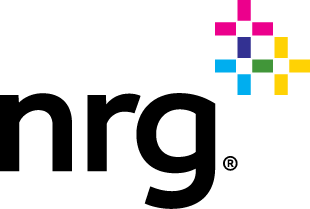From Renewable Energy’s Complexity, a Silver Lining
NRG Editorial Voices
Today’s businesses are securing renewable energy in record numbers. In fact, commercial and industrial companies contracted for more renewables last year than ever before — 6.5 GW compared to 2.8 GW in 2017. In Texas alone, the total amount of energy generated from wind and solar has reached nearly 20 percent in recent years. The state stands out for its abundance of renewables offered at attractive prices, motivating businesses to sign large offtake agreements.(1)
Still many companies are holding back. They are unsure how to proceed in the face of complex products, demanding contracts, and an uncertain market.
What’s creating this complexity and is there a way to simplify renewable energy opportunities?
That’s the issue Lynda Clemmons, Vice President of Sustainable Solutions at NRG Energy, tackled at the 2019 Innovation Summit in Houston on March 13.
“To fully understand the influence of renewable energy within the ERCOT market, it’s important to understand historical events and how they are bearing out. There are some surprises in how renewable energy can influence supply and demand and ultimately energy pricing,” said Clemmons.
From competition came innovation
Early to deregulate, Texas offers an example of how competition leads to innovation, specifically in the form of energy diversification — a move away from nuclear and fossil fuels to more choices, like wind and solar.
One problem
But there is a wrinkle. Renewables also induce a perfect storm of sorts that can lead to power shortfalls and create wholesale market price pressures. This became apparent last summer.
Heading into the season of high temperatures and high demand, ERCOT had predicted a low reserve margin — the cushion of power-generating capacity available when electricity demand surges. Too many power plants had retired; not enough had been built to take their place. The industry braced for price escalations.
What actually happened underscored how renewables are changing market conditions.
Temperatures rose as expected and energy demand skyrocketed as feared, but the state did not run short on energy. Texas’ vast wind fleet gets part of the credit. The record-demand days also happened to be windy days, so wind power helped avert a shortfall.
This, of course, is good news — clean, renewable energy helping to suppress wholesale power prices. But it also reveals a worrisome vulnerability created by increasing dependence on wind power. We cannot control when the wind blows. So just as it appeared when most needed, it could also disappear at another crucial time.
What does this mean to the energy customer in ERCOT? We appear to be entering a period of price uncertainty as market operators and regulators work out this new reality. Over the next five years, NRG expects to see even more renewables and fewer conventional power plants. This is likely to create a tighter market and greater price volatility.
Now for that silver lining. Uncertainty, it seems, can mean opportunity.
Favorable conditions for businesses to secure renewables
Based on forward prices in ERCOT, an overall period of lower prices appears to be emerging and creating favorable conditions for renewable energy buyers. The specific term for this is “backwardation” — where the price of power for future delivery is lower than today’s spot price. In a broader sense, the forward market appears to be pricing in some solution to ERCOT’s reserve margin challenge.
These lower prices open the door for smaller businesses to procure competitively priced renewable products under long-term agreements. Until now, such contracts appeared affordable only to large operations.
So how can businesses take advantage of this emerging opportunity to go green?
First and foremost, it is important that a business does not choose its renewable energy product in a vacuum, but with its overall electricity approach in mind. Just like a financial portfolio, being flexible, balanced, and clear-sighted leads to positive outcomes. By weighing the pros and cons of all options, renewable and otherwise, opportunities for savings and efficiencies will emerge.
This is where assistance from a knowledgeable and vetted energy partner comes into play. A leading energy provider with decades of market experience, NRG collaborates with businesses, provides energy market perspectives, and can find the right energy products, including renewables, for each customer’s budget and risk tolerance.
For more details about this new market reality and how to leverage it, download the full white paper, “Capturing the Full Value of Renewable Energy for Businesses in ERCOT.”
1 Wood Mackenzie, Corporate Procurement of Wind and Solar 2018, January 2019. Scientific American, Plugged In. January 29, 2018

